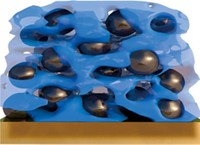Advertisement
Grab your lab coat. Let's get started
Welcome!
Welcome!
Create an account below to get 6 C&EN articles per month, receive newsletters and more - all free.
It seems this is your first time logging in online. Please enter the following information to continue.
As an ACS member you automatically get access to this site. All we need is few more details to create your reading experience.
Not you? Sign in with a different account.
Not you? Sign in with a different account.
ERROR 1
ERROR 1
ERROR 2
ERROR 2
ERROR 2
ERROR 2
ERROR 2
Password and Confirm password must match.
If you have an ACS member number, please enter it here so we can link this account to your membership. (optional)
ERROR 2
ACS values your privacy. By submitting your information, you are gaining access to C&EN and subscribing to our weekly newsletter. We use the information you provide to make your reading experience better, and we will never sell your data to third party members.
Energy Storage
Lithium-ion batteries go cobalt free
A new high-energy cathode material jettisons the fraught, pricey metal
by Prachi Patel, special to C&EN
July 22, 2020
| A version of this story appeared in
Volume 98, Issue 29
Commercial lithium-ion batteries have always relied on cathodes that contain cobalt, but the expensive metal’s supply chain is fraught with issues. A new cobalt-free cathode could provide reprieve (Adv. Mater. 2020, DOI: 10.1002/adma.202002718). What’s more, in lab tests, lithium-ion battery cells made with the new cathode held more energy over hundreds of charge cycles than commercial ones.
Battery cathode materials are layered crystals of lithium metal oxides. The metal is usually a mix of nickel, cobalt, aluminum, and manganese. Nickel alone would give the most energy-dense batteries, meaning cars with longer driving range, but it is unstable and reactive. Cobalt is key for boosting energy density and battery life because it keeps the layered structure stable as lithium ions get reversibly stuffed into and extracted from the cathode during battery operation.
Most of today’s electric vehicle batteries use nickel-manganese-cobalt cathodes, with 60% nickel and 20% each of cobalt and manganese. Researchers are working on pushing nickel up to 80% and bringing the other metals down to 10% each.
But some carmakers want to eliminate cobalt entirely, given its scarcity and ethical considerations around mining the metal. Around two-thirds of the world’s cobalt mining happens in the Democratic Republic of Congo, where operations are linked to human rights and environmental abuses. Cobalt-free cathodes made so far, though, have lagged in performance and have not been tested in practical cells—until now.
Arumugam Manthiram, a solid state chemist at the University of Texas at Austin, and his colleagues made a high-performance, cobalt-free cathode material that is 89% nickel, with aluminum and manganese comprising the rest. Making a layered crystal with an even distribution of metal ions is key to a good cathode, but without the help of cobalt, it has proven difficult, Manthiram says. “The ions tend to segregate, so you won’t get performance,” he explains.
The UT Austin team was able to get a uniform distribution by carefully controlling their chemical synthesis. They first mix aqueous solutions of nickel, manganese, and aluminum salts. Then they add potassium and ammonium hydroxide to maintain a precise pH and heat to a controlled temperature of 50°C. This forces the metal hydroxides to precipitate out of the solution together, keeping the ions evenly distributed. The precipitate is then filtered, mixed with lithium hydroxide, and heated until it sinters into 12 µm spheres of the final cathode material.
The researchers made battery pouch cells with the new cathode and a commercial graphite anode, and compared it with nickel-manganese-cobalt cathodes. The new cathode battery had higher energy density over 1000 charge cycles. Manthiram and his colleagues have launched a start-up, TexPower, to commercialize the material.
K. M. Abraham, chief technology officer at battery consulting company E-KEM Sciences, says the long-term safety and performance of the new material will need to be assessed using industrial scale cathodes. But he says the work is a very important development. “These investigators appear to have finally achieved the long sought-after cobalt-free cathode,” he says.





Join the conversation
Contact the reporter
Submit a Letter to the Editor for publication
Engage with us on Twitter